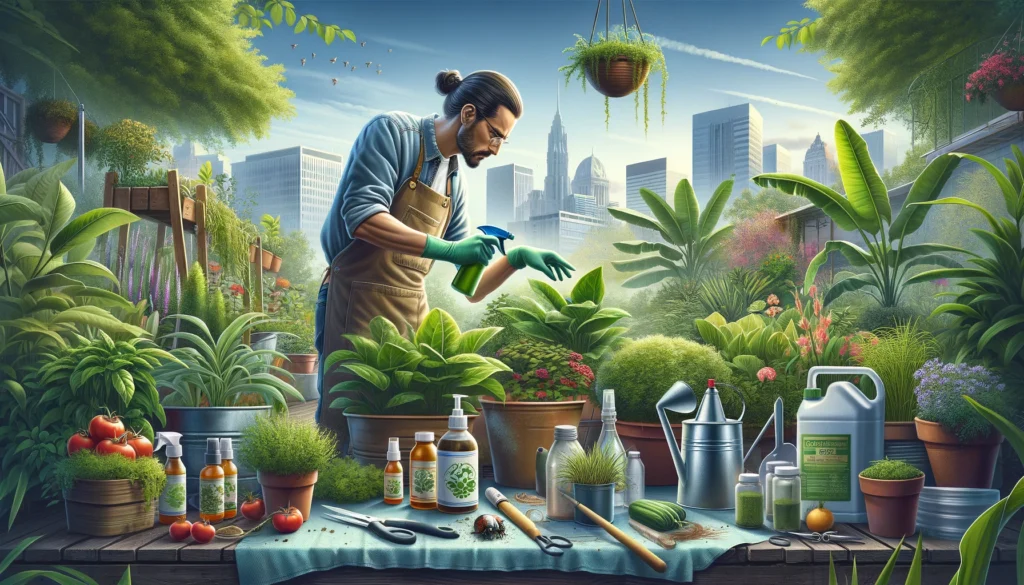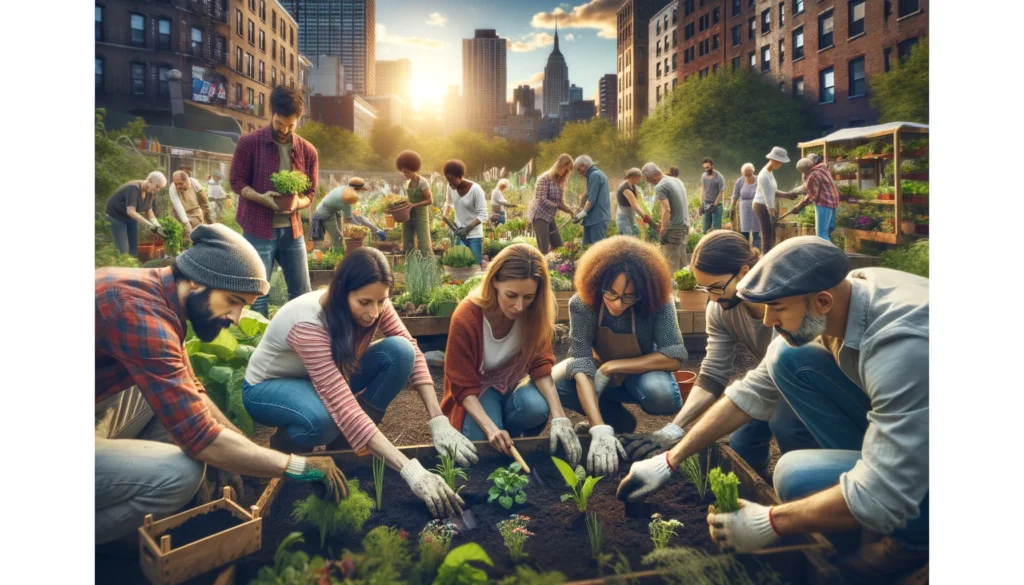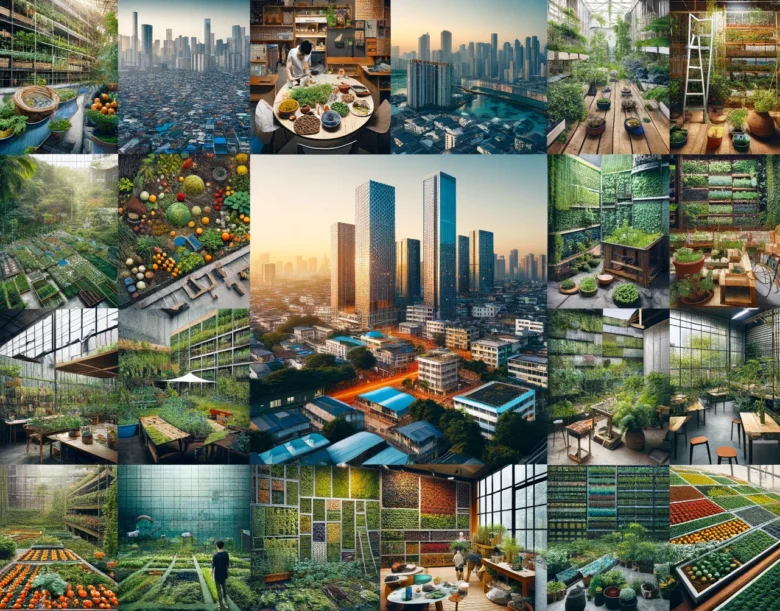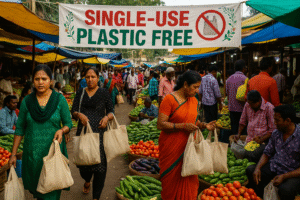In the final installment of our urban gardening series, we confront the inevitable challenges that come with transforming urban spaces into verdant sanctuaries. While the vision of lush, productive gardens amidst concrete landscapes is inspiring, the reality of achieving this requires navigating through obstacles such as limited space, soil quality, and adverse environmental conditions. This part delves into practical solutions and innovative approaches to overcome these hurdles, ensuring your urban garden not only survives but thrives. We also explore inspiring success stories from around the globe, showcasing the resilience and creativity of urban gardeners in creating sustainable, green communities.
Challenges and Solutions in Urban Gardening
Urban gardening is an enriching experience, yet it comes with its own set of challenges. From limited space to soil quality and environmental conditions, urban gardeners must navigate these obstacles creatively. Let’s explore common challenges and innovative solutions to ensure your urban garden thrives.
Limited Space
- Challenge: Urban dwellers often face the constraint of limited gardening space, making it difficult to grow a variety of plants.
- Solution: Vertical gardening and container gardening are effective ways to maximize limited space. Utilizing walls, balconies, and even windowsills can help create more growing area.

Soil Quality
- Challenge: Urban soil is often poor in quality, contaminated, or non-existent in places where concrete dominates.
- Solution: Using high-quality potting mix in containers, raised beds or grow bags can circumvent the issue of poor soil quality. Composting can also enrich the soil with necessary nutrients. Other than that Soilless media, a cornerstone of modern horticulture, offers an innovative solution for plant growth without the use of traditional soil. These media, comprising materials like coco coir, perlite, vermiculite, and rock wool, provide plants with essential support, moisture, and air circulation, optimizing root health and plant growth. Especially beneficial in urban gardening and hydroponic systems, soilless media enable precise control over nutrient delivery, ensuring a cleaner, more sustainable approach to agriculture that can thrive in diverse environments, from rooftop gardens to indoor plant setups.
Watering Concerns
- Challenge: Ensuring plants receive adequate water without wastage or overwatering can be tricky, especially in balconies and rooftops where access to water might be limited.
- Solution: Implementing drip irrigation systems or self-watering containers can provide consistent moisture. Collecting rainwater is an eco-friendly option to supplement watering needs.
Pest and Disease Management
- Challenge: Urban gardens are not immune to pests and diseases, which can thrive in compact spaces and harm plants.
- Solution: Practice integrated pest management (IPM) techniques, such as introducing beneficial insects, using organic pesticides, and encouraging biodiversity to naturally control pest populations.

Environmental Conditions
- Challenge: Urban areas can present harsh growing conditions, including pollution, high temperatures, and strong winds, especially in rooftop and balcony gardens.
- Solution: Choose plants that are tolerant of urban conditions. Implementing windbreaks, shade cloths, and using mulch can help protect plants from extreme conditions.
While urban gardening presents its unique challenges, innovative solutions and a bit of creativity can lead to a flourishing garden in the heart of the city. Embracing techniques like vertical gardening, container gardening, and sustainable pest management allow urban gardeners to overcome obstacles and cultivate vibrant, productive green spaces. The key is to start small, learn from experience, and gradually expand your urban gardening endeavors.
Urban gardening is not just about growing food or beautifying spaces; it’s about resilience, sustainability, and community. By addressing these challenges head-on, urban gardeners can transform their surroundings into lush, green sanctuaries that provide fresh produce, improve air quality, and offer a much-needed connection to nature in urban landscapes.
Exploring Case Studies and Success Stories in Urban Gardening
Urban gardening projects around the world serve as inspiring examples of how individuals and communities can transform their environments and create sustainable, green spaces in urban areas. These success stories highlight the potential for urban gardens to improve food security, enhance biodiversity, and foster community engagement, even in densely populated cities.

Case Study: The High Line, New York City
- Overview: Originally a disused railway line, the High Line was transformed into an elevated urban park and garden. It’s a prime example of how innovative design and community efforts can reclaim and repurpose urban spaces for greenery and public use.
- Impact: The High Line has become a model for urban regeneration, biodiversity, and landscape architecture, attracting millions of visitors and inspiring similar projects globally.
Case Study: Prinzessinnengarten, Berlin
- Overview: Started on a vacant lot in Kreuzberg, Berlin, Prinzessinnengarten is a community garden that has become a symbol of urban gardening’s potential to create community spaces, promote sustainable living, and enhance urban food production.
- Impact: It demonstrates the power of community mobilization in urban development and sustainability, offering educational programs and workshops on urban agriculture and sustainability.
Case Study: Lufa Farms, Montreal
- Overview: Lufa Farms is pioneering the concept of rooftop farming in Montreal, Canada. They operate multiple rooftop greenhouses, producing a wide variety of vegetables and herbs year-round, directly addressing urban food production and distribution challenges.
- Impact: Their model showcases how urban agriculture can be scaled commercially to contribute to local food systems, reduce food miles, and make cities more sustainable.
These case studies illustrate just a few examples of successful urban gardening initiatives that have made significant impacts in their communities and beyond. They provide valuable lessons on the importance of community involvement, innovative use of space, and the integration of sustainability principles into urban planning. By learning from these examples, new projects can be developed to further the reach and impact of urban gardening across the globe.
For those interested in starting their own urban gardening project, researching these and other case studies can offer inspiration, practical ideas, and a roadmap for what can be achieved with dedication and community support. Whether it’s a small community garden or a large-scale urban agriculture initiative, each project contributes to a greener, more sustainable urban future.
Conclusion: Cultivating a Greener Tomorrow
As our journey through the vibrant world of urban gardening comes to a close, we stand at the threshold of a greener future. Urban gardens are more than just patches of green in a concrete desert; they are the heartbeats of sustainable living, community cohesion, and environmental stewardship in our cities. From the small windowsill herbs to the expansive rooftop farms, each garden is a testament to the resilience and creativity of urban dwellers striving for a harmonious coexistence with nature.
The success stories and case studies we’ve explored offer a glimpse into the transformative power of urban gardening. They show us that, regardless of the challenges—be it limited space, poor soil quality, or adverse environmental conditions—there are innovative and effective solutions waiting to be discovered and implemented.

Call to Action: Join the Green Movement
Now, the spade is in your hands. Whether you have a tiny balcony, a sunlit windowsill, or access to a communal rooftop, the opportunity to contribute to this green revolution is right at your doorstep. Start small, with a few pots of herbs or vegetables, and let your garden grow as your confidence does. Share your progress, challenges, and victories with your community—online or offline—to inspire others and build a network of urban gardeners.
If you don’t have the space to garden, consider supporting local urban gardening initiatives. Volunteer, donate, or simply spread the word about the importance of these projects. Every action, no matter how small, contributes to the growth of urban green spaces and the promotion of sustainable urban living.
Guidance Instructions for Next Part
- Research and Document Your Urban Gardening Journey: Start a blog, vlog, or social media account dedicated to your urban gardening project. Share updates, tips, and lessons learned to inspire others and create a supportive community.
- Engage with Local Urban Gardening Communities: Look for local gardening clubs, workshops, or community gardens where you can share knowledge, resources, and experiences with fellow urban gardeners.
- Advocate for Urban Green Spaces: Participate in city planning meetings or community forums to advocate for more urban green spaces, such as parks, community gardens, and green rooftops. Your voice can help shape the future of urban development towards a more sustainable and green direction.
The potential of urban gardening is boundless, limited only by our imagination and willingness to act. By embracing the principles of sustainability, community, and innovation, we can transform our urban landscapes one garden at a time. Join the movement today and be part of crafting a conscious, greener tomorrow.
Author’s Note
Writing this three-part series on urban gardening has been a journey of discovery, not just of the technicalities of gardening in constrained spaces, but of the spirit of community, resilience, and hope that drives this movement. This concluding part aims to equip you with the knowledge to overcome the obstacles you may face and to inspire you with stories of what can be achieved.
Urban gardening is a testament to what we can achieve when we work with nature, even in the most unlikely places. Thank you for joining me on this green adventure. Here’s to growing our urban Edens, where every plant sown is a step towards a more sustainable urban life.
G.C., Ecosociosphere contributor.
References
- EcoWatch. “Urban Gardening 101: Everything You Need to Know.” Accessed February 9, 2024. EcoWatch.
- The Happy Chicken Coop. “Urban Gardening For Beginners: The Ultimate Guide.” Accessed February 9, 2024. The Happy Chicken Coop.
- Iberdrola. “What is an Urban Garden and how to make one.” Accessed February 9, 2024. Iberdrola.
- Conserve Energy Future. “What is Urban Gardening? Importance and Amazing Ideas For Sustainable Urban Gardening.” Accessed February 9, 2024. Conserve Energy Future.
These resources have been invaluable in crafting this blog, providing insights and information that shaped the narrative and advice shared. For further reading and deeper exploration into the world of urban gardening, I highly recommend visiting these sites. They offer a wealth of knowledge on sustainability, urban agriculture, and community engagement that can inspire and inform your gardening journey.
Thank you for joining me on this exploration of urban gardening. May your gardens grow lush and your communities flourish!





Comments
Can you be more specific about the content of your article? After reading it, I still have some doubts. Hope you can help me.
Your point of view caught my eye and was very interesting. Thanks. I have a question for you.
Thanks for sharing. I read many of your blog posts, cool, your blog is very good.
Thanks for sharing. I read many of your blog posts, cool, your blog is very good.
Hmmm is anyone else having probles with the images on this blog loading?
I’m trying to find out if its a problem on my ennd or if
it’s the blog. Any suggestions would be greatly appreciated. http://boyarka-Inform.com/
Just here to dive into discussions, share experiences, and learn something new as I go.
I like understanding different opinions and sharing my input when it’s helpful. Happy to hear new ideas and meeting like-minded people.
There is my website:https://automisto24.com.ua/
This article is really a nice oone it axsists new internet viewers,
wwho aree wishing in fazvor of blogging. https://hashnode.com/@Melbet33
Howdy! Do you use Twitter? I’d like to follow you if that would be
ok. I’m absolutely enjoying your blog and look forward to new posts. https://slotsgemcasinoinuk.Wordpress.com/
Happy to dive into discussions, share thoughts, and pick up new insights along the way.
I’m interested in understanding different opinions and adding to the conversation when possible. Interested in hearing new ideas and building connections.
There’s my site-AutoMisto24
https://automisto24.com.ua/